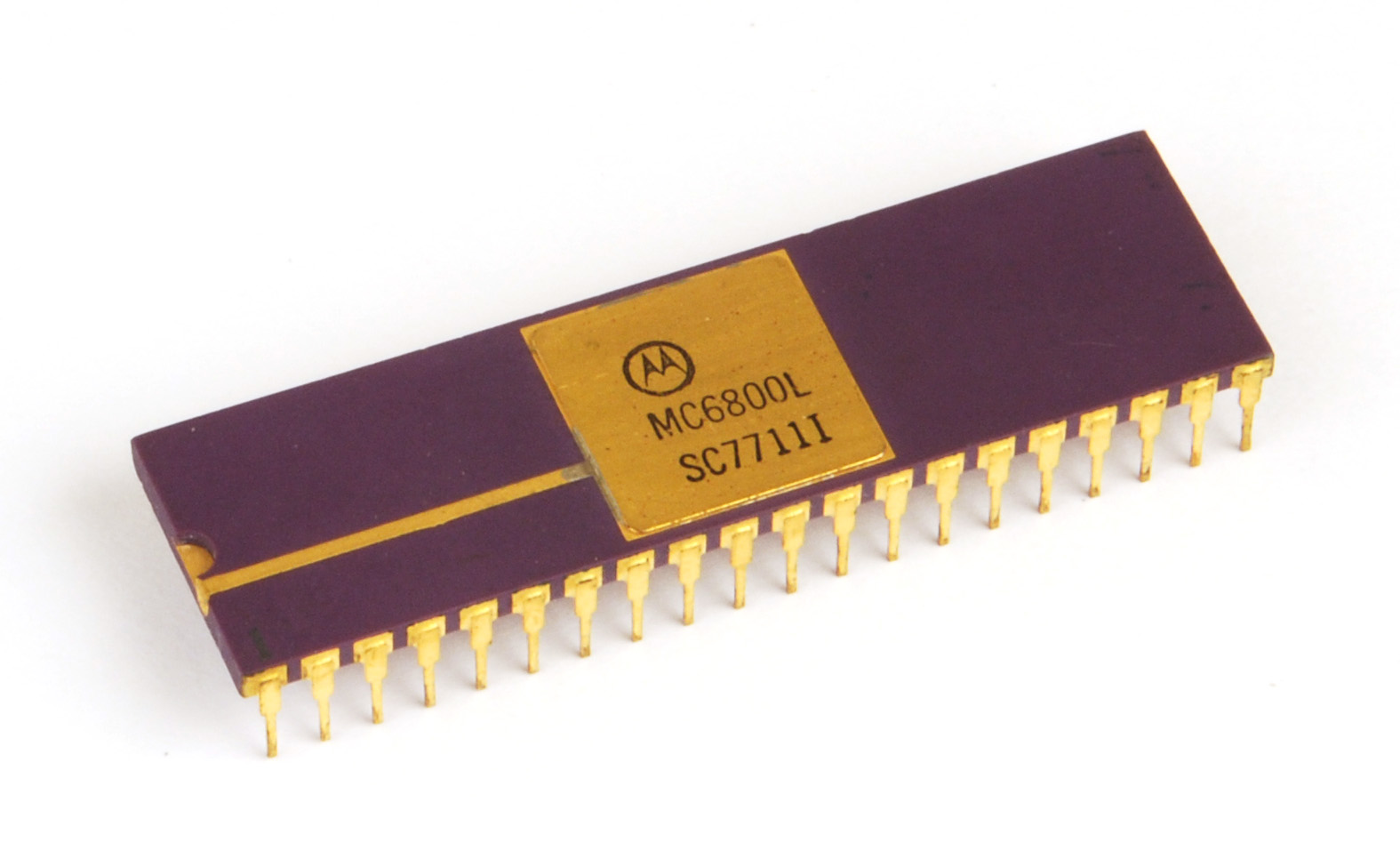
Our History

As embedded systems have developed, iSYSTEM has kept up to speed, delivering tools to meet demanding needs. Here we look at these historical parallel developments.
-
2022
iSYSTEM is a part of the TASKING Group
The TASKING Group is a leading provider of embedded software development tools headquartered in Munich, Germany. TASKING development tools are used by automotive manufacturers and the world's largest Tier 1 suppliers to realize high-performance applications in safety-critical areas.
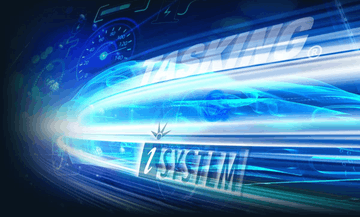
-
2022
iSYSTEM Open Source projects on GitHub
To share all our knowledge gained over the years, we host software and hardware projects on GitHub: daqIDEA, emuSync, testIDEA, STM32 Nucleo-144 Debug and Trace Adapter. You can find all iSYSTEM Open Source projects on iSYSTEM GitHub.
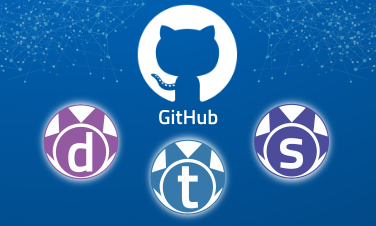
-
2022
iSYSTEM Debugger and Software Analyzer front-end support for Synopsys VDK
Before a real target hardware is available, it makes sense to start development and initial integration work with a virtual hardware. Increasing complexity of embedded software in general, time-to-market and the early setup of a test automation justify the use of such virtual hardware also called Virtual Target or Virtual Prototype.
-
2021
iSYSTEM Information Security Management System
The iSYSTEM Information Security Management System (ISMS) is aimed at ensuring the Confidentiality, Integrity, and Availability of information and underlying assets against threats, whether internal or external, deliberate, or accidental, that could affect activities of business processes in the iSYSTEM organization.
-
2021
DAP over CAN Physical Layer Converter (DXCPL)
It enables debugging via the regular CAN pins of the ECU connector without opening its housing. This connection is electrically robust due to the nature of the CAN bus.
The DXCPL Converter translates Infineon AURIX™ SPD (Single Pin DAP) encoded DAP messages to the CAN bus physical layer. iSYSTEM hardware solution supports DXCPL on Infineon AURIX™ TC2xx and TC3xx devices.
-
2021
iC5700 CI & iC5000 CI for Continuous Integration
iSYSTEM introduces a new product line within their BlueBox and embedded software tools portfolio: the iC5000 CI and iC5700 CI, which allows implementing hardware debugging into Continuous Integration (CI) infrastructures.
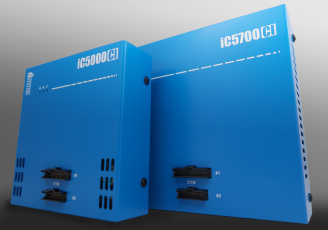
-
2021
iSYSTEM celebrates 35th anniversary.
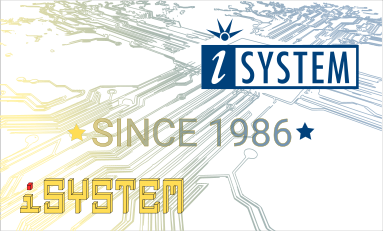
-
2021
New Emulation Adapters -Infineon TC377TE, Infineon TC397XE, Cypress CYT2B7 & ST Microelectronics SPC58 N Line
Infineon TC377TE Emulation Adapter provides full trace capabilities for TC332, TC323, TC333, TC324, TC334,TC364, TC365, TC375, TC327LP, TC337LP, TC367DP, TC377TP (BGA).
Infineon TC397XE Emulation Adapter provides full trace capabilities for TC397Xx, TC387QP, TC3E7Qx.
Cypress CYT2B7 Emulation Adapter, which is based on the 176-pin CYT2B78CA superset device, provides full trace capabilities for the 64-pin, 80-pin and 100-pin Traveo II CYT2B7 series devices.
ST SPC58 (Chorus) H Line Emulation Adapter primary use case is providing Nexus trace functionality for the SPC58 H Line devices in the QFP176 package, where Nexus trace port is not available.

-
2021
Introducing a new member of the Active Probe Family - Infineon SGBT (HSTCU) Active Probe
Active Probe enables debugging, tracing and testing of Infineon’s AURIX™ microcontroller family. It supports the DAP and Aurora GigaBit Trace (AGBT) interface via USB-C connector. Its small and compact hardware size allows for connecting to a target microcontroller in a confined space as far as 10 m away. The Active Probe supports up to 1 parallel AGBT lanes, running at a maximum bitrate of 5Gbps.
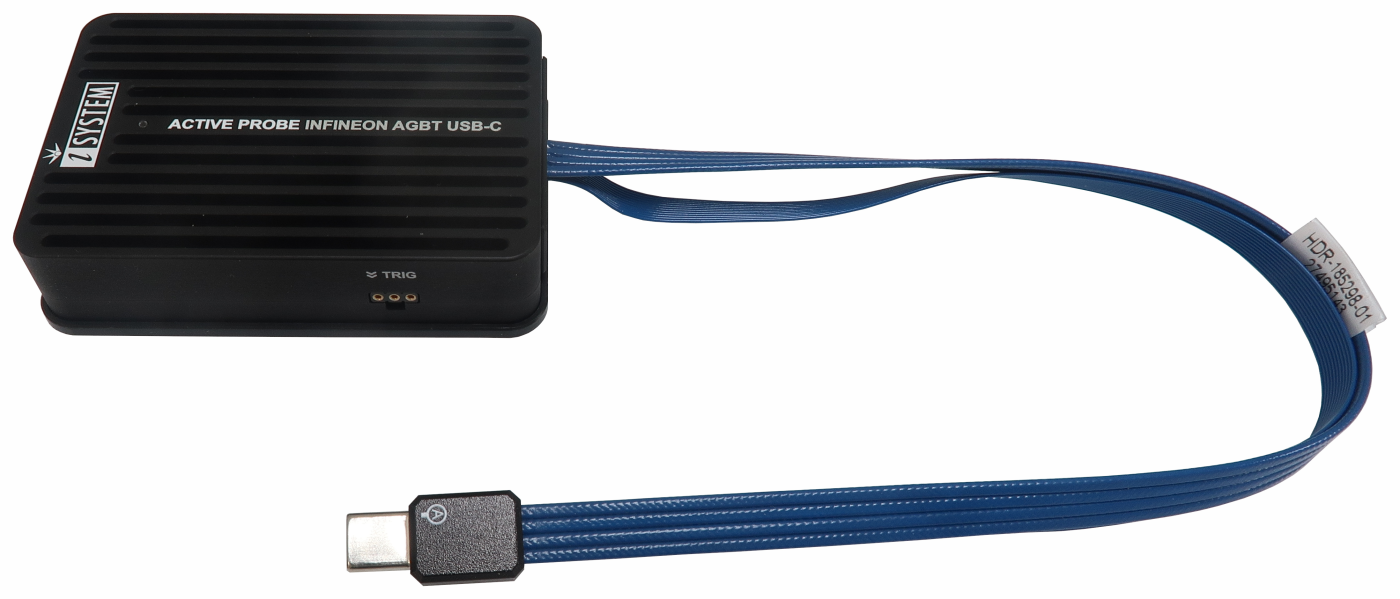
-
2021
New icons for iSYSTEM Software products.

-
2021
winIDEA 9.21
Introducing a new generation of the iSYSTEM Integrated Development Environment winIDEA.
Embedded software is no longer an application running on a single core as in the olden days. Hypervisors, virtual machines, multiple operating systems and more than one instance of a single application running at the same time is already a reality in the world of embedded systems. With winIDEA 9.21 iSYSTEM introduces the concept of multi memory space (MMS) debug and trace to develop and test your next generation embedded software.
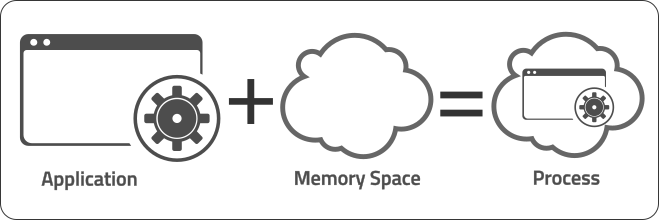
-
2021
Continuous Integration (CI) as a product
CI @iSYSTEM has been in place since 2016. Since then we run more than 150 test targets in several test racks to master our daily challenges in software development. Now, based on this vast experience, we offer CI as a product a combination of optimized iSYSTEM hardware to be used in test stands and knowledge transfer in terms of consulting services.
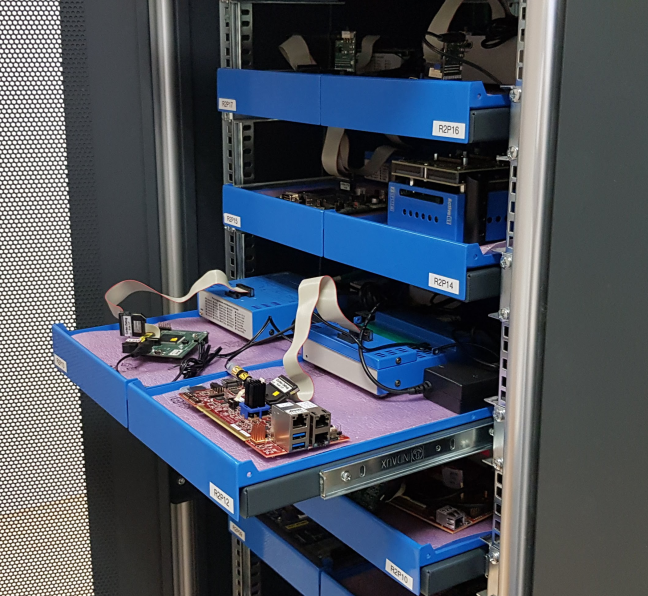
-
2020
Enterprise Business Model
Offering subscription services for a software and hardware combined product is challenging.
We introduce Enterprise Basic, Advanced and CI subscription license models to enable our customers to flexibly use and integrate iSYSTEM tools in their process environment. A single license enables all BlueBox features, including support as well as maintenance.
-
2020
Sync Debug and Trace
Introducing the iSYSTEM FNet Bridge for running a synchronized Trace recording on two ECUs in parallel.
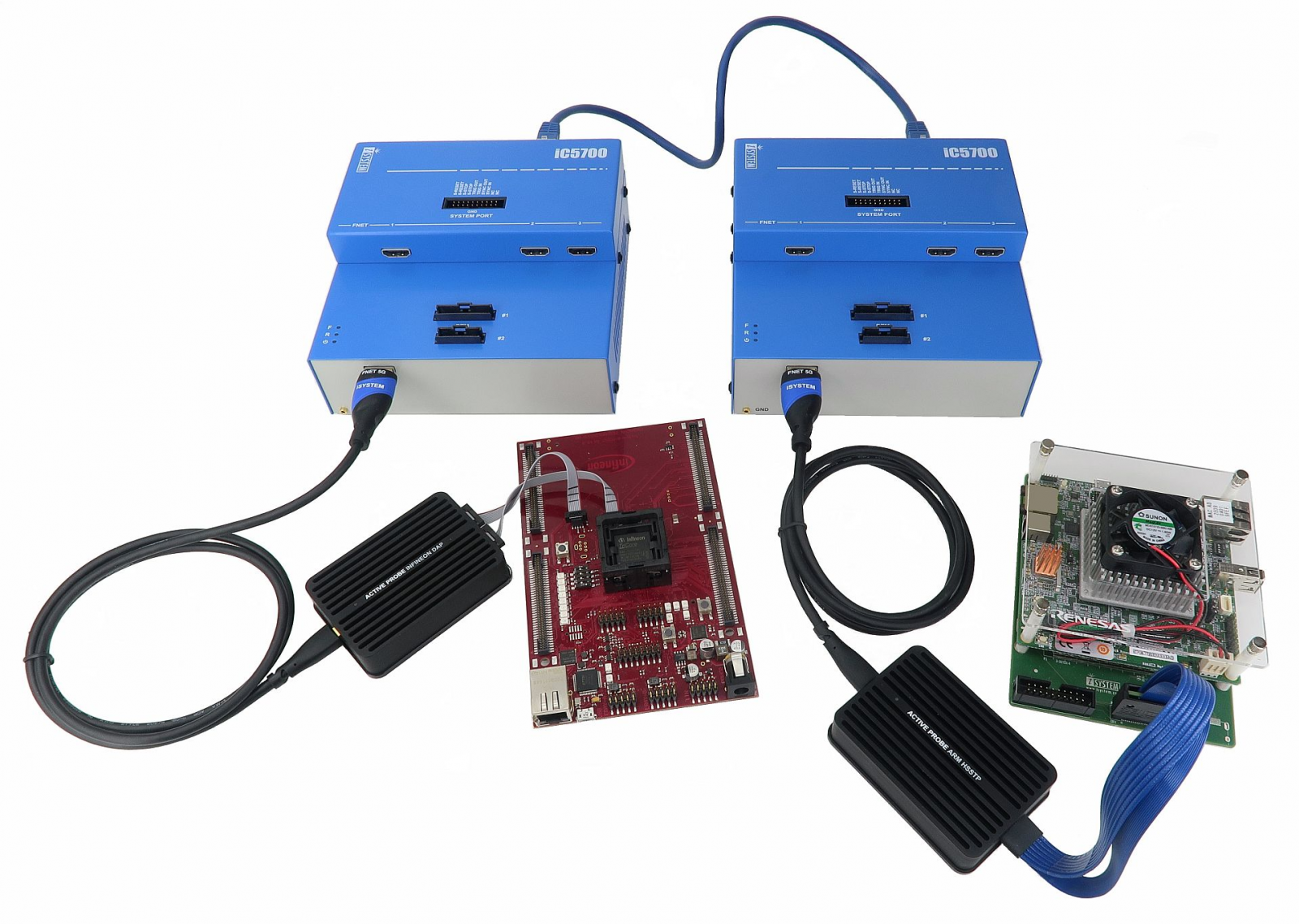
-
2020
"Never waste a good crisis" - Rahm Emanuel. This is how we at iSYSTEM see this worldwide health crisis as a lot of you out there as well. We are currently streamlining our product portfolio; new products are under development, knowledge transfer resources are growing fast. Learning from each other is key for us to provide the right content, tool functionality and services for the appropriate use cases in embedded software development and testing.
-
2019
iSYSTEM opens an office in Regensburg, Germany and extends its operation into the east of Bavaria. Regensburg is an automotive hot spot. Not only automotive companies are present, also a well connected university with the right focus in technology.
-
2019
Introducing new members of the Active Probe Family
An Active Probe connects to a target system’s (e.g., a car ECU) debug and/or trace interface and captures all MCU related activities in real-time including AUTOSAR OS. It is a high-speed and very reliable connection to an iC5700 that enables advanced analysis of complex systems such as synchronized debug and trace of multiple MCUs, Network trace, CAN/LIN data capture, analog and digital capture and control, correlation of MCU and network events.
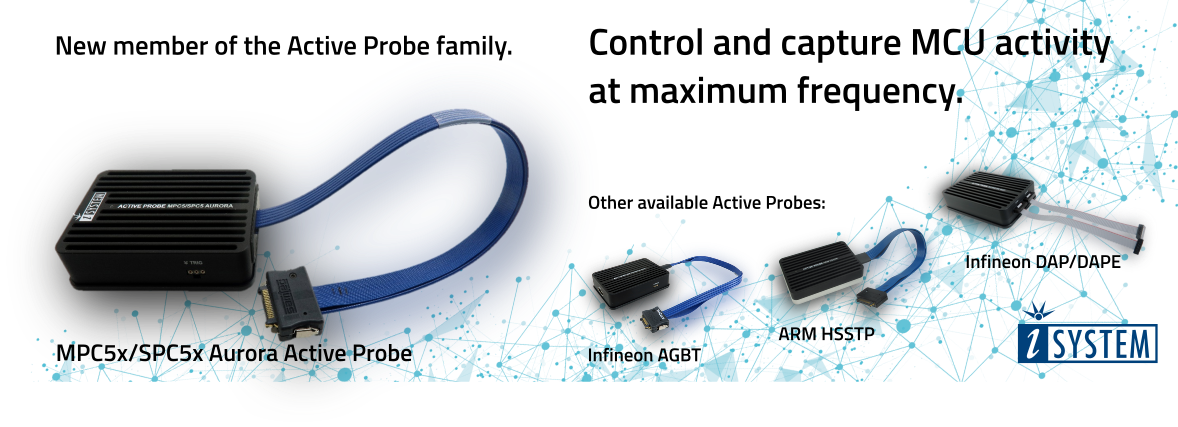
-
2018
iSYSTEM opens an office in Novi, Michigan. With many customers involved in developing the safety-critical electronics for the automotive industry, a presence in the Motor City is now provided by our Detroit team.
-
2017
iSYSTEM launches their next-generation BlueBox hardware – the iC5700.
Featuring a gigabit internal bus, known as FNet, the BlueBox platform can now support various data capture interfaces (such as CAN, CANFD, LIN, digital and analog), splicing this information into the available program and data trace provided by the target microcontroller. In addition, new “Active Probes” support the full data rate of the Infineon AURIX Dual-DAP debug interface as well as the ARM® defined HSSTP.
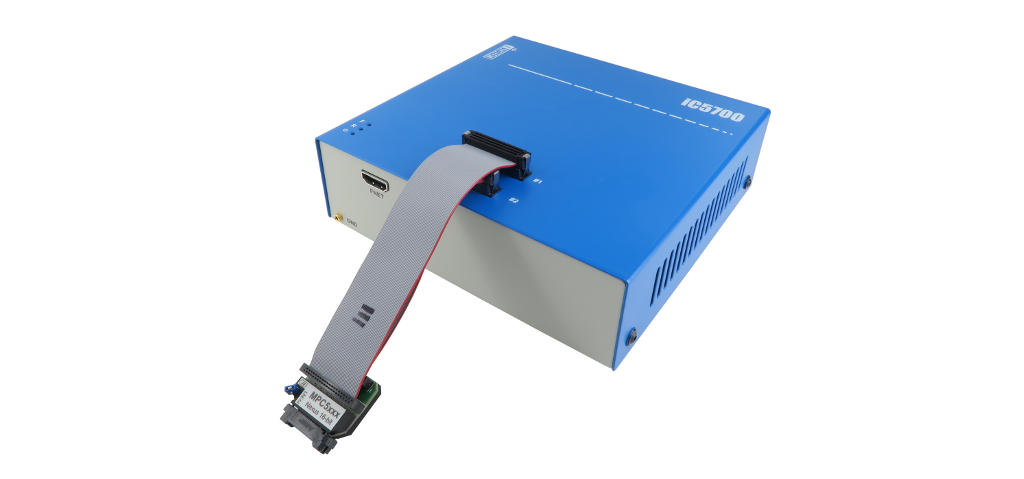
-
2016
ARM announces the Cortex-M23 and Cortex-M33(F), the Cortex-R8(F) and Cortex-R52(F), as well as the Cortex-A73 and Cortex-A32.
-
2016
iSYSTEM celebrates its 30th anniversary. ASYST d.o.o. renames itself iSYSTEM Labs d.o.o. in recognition of the close working partnership the two firms have.
-
2015
ASYST d.o.o. invests in pick-and-place machinery and wave soldering tooling, enabling the team to manufacture all BlueBox hardware and accessories in-house for the first time.
-
2014
ARM announces the Cortex-M7(F).
-
2014
With the industries growing interest in powerful 32-bit microcontrollers, with their increasing memory addressing capability and performance, a new BlueBox is required with an updated internal architecture that can handle the trace-data speeds and provide enough buffering and bandwidth to the host development PC. The iC5500 is launched featuring a 1GB SRAM buffer and a USB 3.0 interface to support those needs. As its predecessor, the tool can also be expanded to capture or control digital and analog signals with the IOM-5 Input/Output Module accessory.
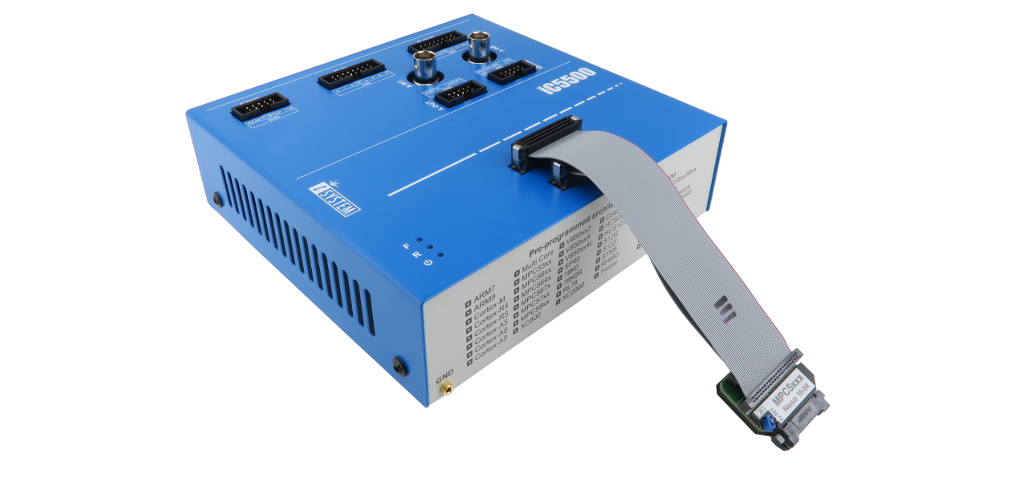
-
2013
Especially in the area of automotive, complex, multi-core and high-performance microcontrollers are increasingly finding their way into safety critical applications. In order to deliver the insights required for developing and testing such applications, the iC6000 is launched. With its USB 3.0 interface to the development PC and 8GB of internal SRAM for buffering trace data, it is ideally suited to products from Infineon (TriCore) and ST Microelectronics and NXP (Power Architecture). The inclusion of an AURORA GBit interface allows the tool to support serial-trace clocks of up to 6.25GHz.
-
2012
ARM announces the Cortex-M0+.
-
2010
ARM announces the Cortex-R4(F), Cortex-R5(F) and Cortex-R7(F).
-
2010
ARM announces the Cortex-M4(F).
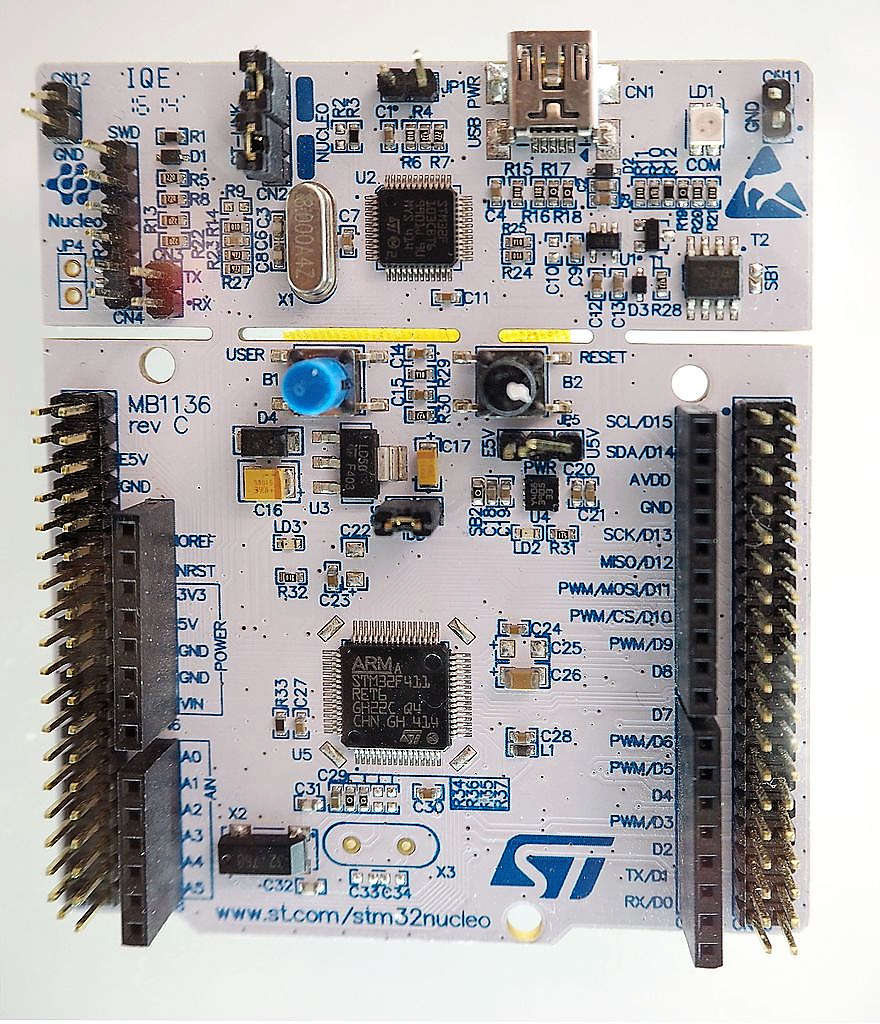
-
2009
With the interface to a microcontroller’s debug interface opened up by isystem.connect, the question raises itself – “Could we test software on the target via the debug tool?” With this, testIDEA, a software tool for creating unit tests, is born. Via its intuitive user interface and clever, time-saving features, embedded software engineers are finding bugs and errors in code before it ever gets to the integration stage.

-
2009
As the cost per transistor continues to drop, the microcontroller industry is moving away from emulation devices and standardizing on various on-chip debug modules, interfacing via serial interfaces such as JTAG. With embedded systems becoming more complex, iSYSTEM decides to revamp its debug hardware platform with the introduction of the iC5000 – a true multi-architecture embedded systems development tool. Rather than needing to purchase different hardware to support different microcontrollers, a simple software license can be purchased, enabling fast and easy immediate support for new products. The iC5000 can also be expanded with an IOM-2 Input/Output Module. Combined with winIDEA, digital and analog signals can be displayed in parallel to trace data, or, together with the isystem.connect SDK, a signal can be output or evaluated as part of a simple hardware-in-the-loop (HIL) system testing platform.
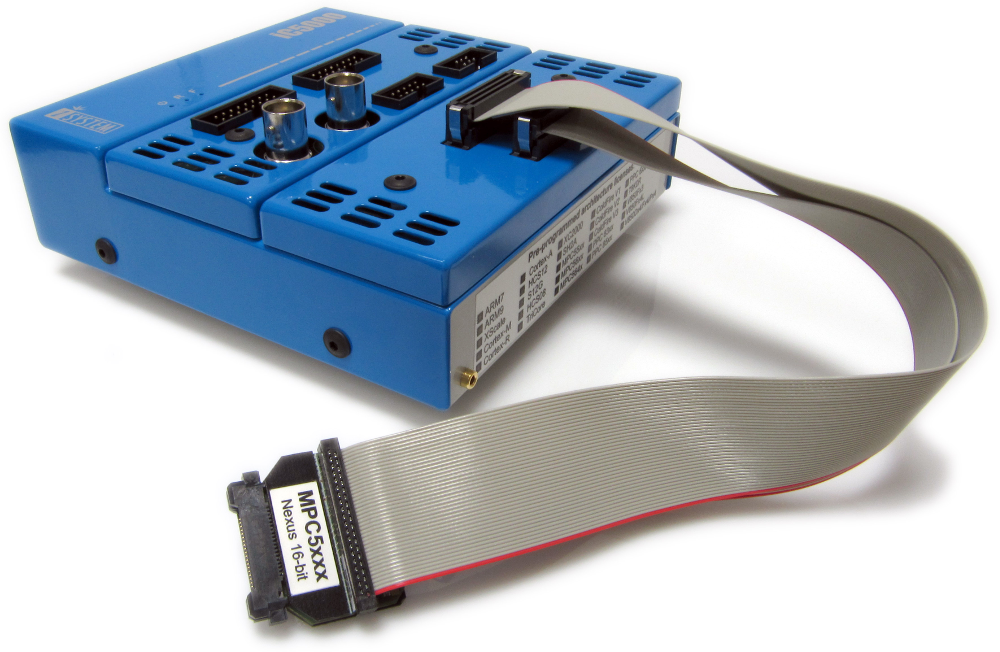
-
2009
ARM announces the Cortex-M0.
-
2008
Due to increasing demand for access to the debug interface via iSYSTEM’s BlueBox technology, the team develops a software development kit (SDK) providing access to the same base functionality that winIDEA has been using to debug, trace and profile code on microcontrollers. The SDK, named isystem.connect, provides APIs that support various languages, such as Python, Java and C++, to name a few.

-
2007
ARM announces the Cortex-M1.
-
2006
iSYSTEM celebrates its 20th anniversary.
-
2004
ARM announces the Cortex-M3.
-
1999
Infineon launches its first generation AUDO processor with a 32-bit unified RISC/MCU/DSP microcontroller core named TriCore.
-
1999
The strategy of modular embedded development hardware having proven itself, and with PC interfaces and operating systems fairly standardized, iSYSTEM roles out a new platform – the iC3000. Featuring both USB and Ethernet interfaces, the iC3000HS can accommodate a range of on-chip debugging interfaces, from JTAG/NEXUS to proprietary, via a PCMCIA-format exchangeable iCARD. For devices still offering old-school emulation, the iC3000GT offers advanced trace features via the iTRACE PRO and iTRACE GT in addition to standard debugging support.
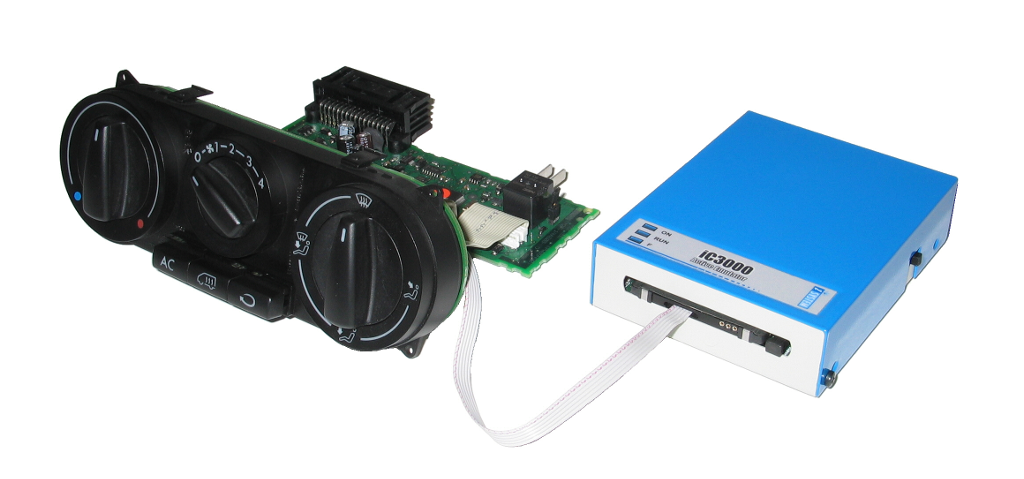
-
1996
iSYSTEM celebrates its 10th anniversary.
-
1995
With the move to windowing operating systems, such as Microsoft’s Windows 95, iSYSTEM also moved with the times, releasing winIDEA. Building upon a well thought through user interface focused on bringing the most used control elements to the forefront, winIDEA continues to move from strength to strength.

-
1995
With a willingness to change and swap between semiconductors vendors and processor architectures amongst customers, the cost of tool investment when changing had started to become an issue. iSYSTEM’s development team started again from scratch to develop a platform that could support everything from 8-bit to 32-bit processing architectures, with only small changes in hardware necessary to support alternative, or even completely new, microcontroller devices. Thus, the iC2000 was born – a stackable, modular platform that is more in line with today’s modern BlueBox architecture. The solution offered a RAM/ROM simulator, processor emulation modules and a “PowerTrace” to support performance analysis and code coverage. As such, the core features of all future iSYSTEM embedded development hardware were put into place.
-
1993
The iC166 In-Circuit Emulator for Siemen’s 80C166 microcontrollers is launched. Various adapter PODs are available to support the various device packages on offer.
-
1993
The Z80 emulator offering is expanded with the introduction of the iC181 In-Circuit Emulator. The programmer product line adds the SEPROG, a low-cost EEPROM programmer supporting a range of E(E)PROMs, PLDs, and flash-based microcontrollers. The simulator product line also adds a low-cost ROM simulator, the ESIM, that supports a good cross-section of common EPROMS.
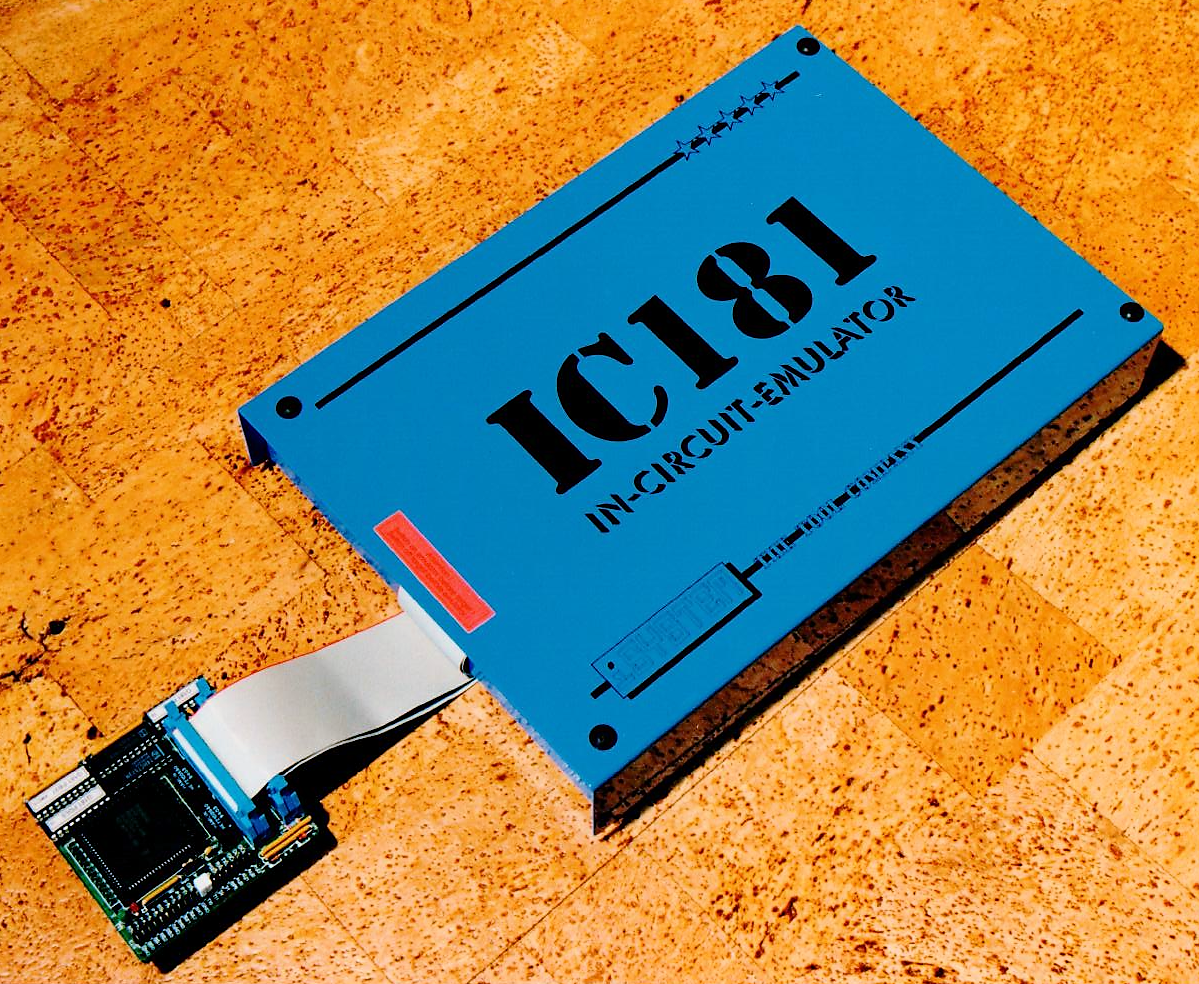
-
1993
Siemens (today Infineon) launch their C166 family of 16-bit RISC microcontrollers with extensions for bit-addressable memory and low-latency interrupt system, targeted to replace Intel’s established 8051 controllers.
-
1992
iSYSTEM’s first windowing integrated development environment is made available in the form of dosIDEA. Many of the basic concepts required for debugging and performing trace with emulators still exist today in winIDEA.
-
1992
The iPS16000 ROM/RAM Simulator is launched. This new memory simulator supported memory sizes of up to 16MBit and access times as low as 70ns were guaranteed.
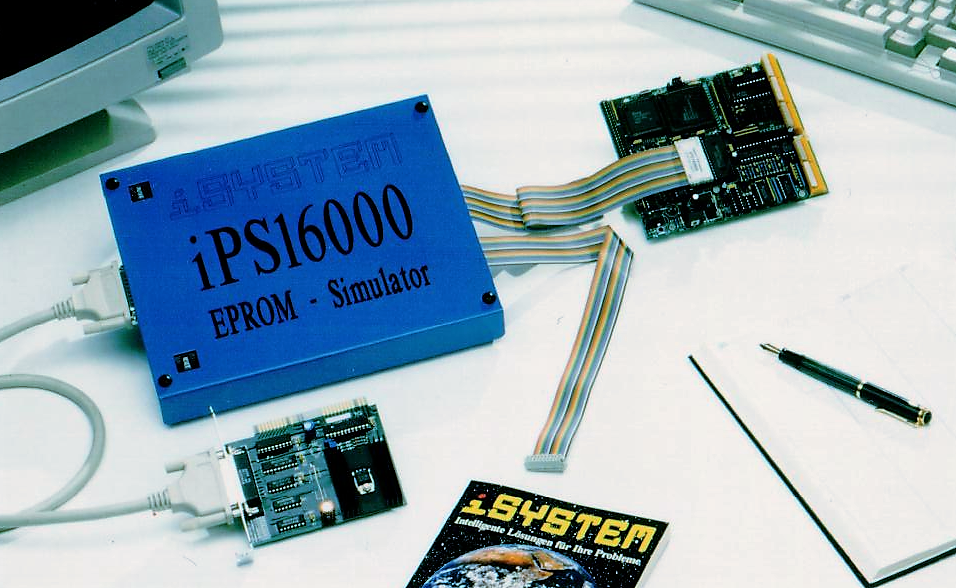
-
1991
A chance meeting between Helmut Kindermann and Iztok Hudoklin from Yugoslavia (today Slovenia) marks the beginning of a business relationship that continues today. Iztok’s company, ASYST d.o.o., takes over responsibility for software and hardware development, whilst iSYSTEM concentrates on customer support and sales.
-
1991
Programmable logic devices, in the form of PLDs, PALs, GALs, FPLs and other variants, needed programming in addition to E(E)PROMs. iSYSTEM launches the iUP8000 Universal Programming System that functions independently of the silicon manufacturers PLD design software and also programs E(E)PROMs.
-
1991
The iCZ8 In-Circuit Emulator from iSYSTEM is launched. Based upon a special bond-out device (Z86C12) the device was capable of emulating over 20 different device variants. The development PC software was designed to work both with keyboard control and a mouse, included pull-down menus and supported color displays.
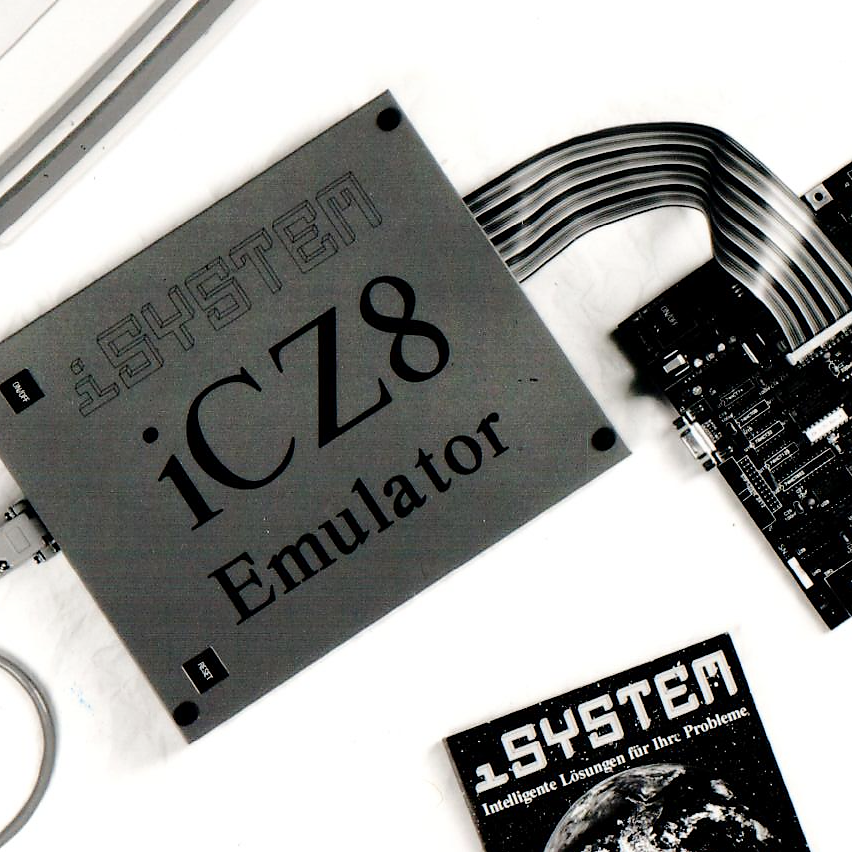
-
1991
iSYSTEM’s first software product, the iSIM-Simulator, provides a simulated environment for code targeted at Motorola’s 6805 devices and their derivatives. Also launched is the iC680 In-Circuit Emulator, targeted at the 6809 family of Motorola microprocessors. It delivers real-time emulation at up to 8MHz, 64Kbytes of emulation memory and supports 20 intelligent breakpoints. A DOS-based windowing interface delivers the insights embedded developers need for their projects.
-
1990
IBM launches the RS/6000 computer, the first to make use of the Power Architecture®. The Power Architecture® is later licensed for various microcontrollers used in the automotive industry, such as the Freescale MPC5000, PowerQUICC and QorIQ devices and ST’s SPC5 family.
-
1989
iSYSTEM adds further 3rd party tools required for debugging and developing embedded systems with V3 Corporation’s PC/LA-32 Logic Analyser, featuring 32 channels and using the host PC for displaying results, and Tango’s PCB and Router design software.Later in the year, in-circuit emulators (ICE) are added for the 68HC11 and 80x86 families, including the Intel 80386.
-
1989
The next ICE to be launched is the iC-180 In-Circuit Emulator, targeted at Z80 processors and its derivatives. The device receives a significant performance boost when coupled with the D64180 real-time coprocessor for PC/XT/AT/386 developer’s machines. Debugging was, however, still limited to command-line DOS software.
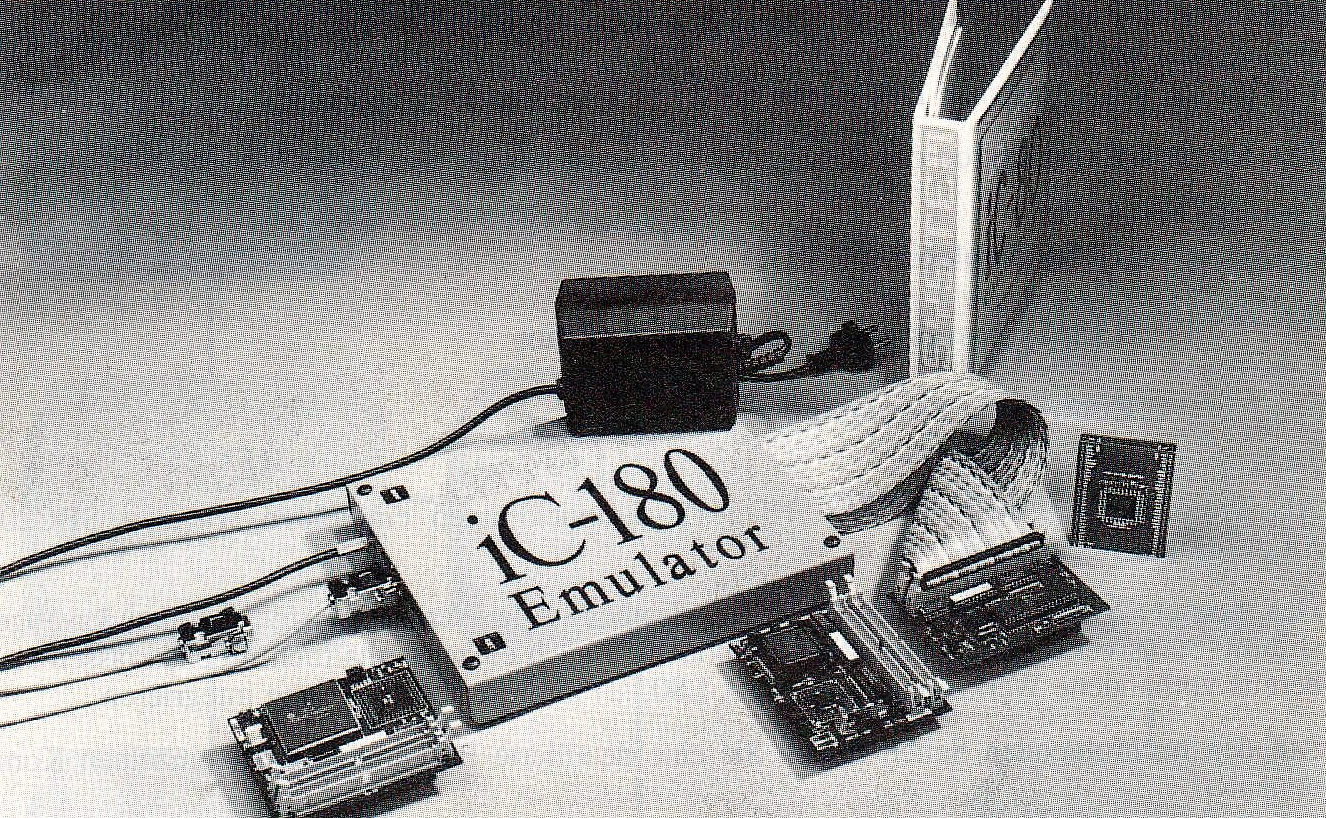
-
1989
iSYSTEM launches its iPS4000 EPROM Simulator. Erasing PROM memory often required an ultra-violet (UV) light box, slowing down how fast new code could be tested on a target embedded system. EPROM simulators used SRAM to simulate EPROM, plugging into the socket of the EPROM memory on the target circuit board.
-
1988
The first in-circuit emulator (ICE) from iSYSTEM is launched in the form of the iC-80 In-Circuit Emulator, designed for Z80 microprocessors (including the HD64180 and 80180). Linked to the development PC via an RS-232 connection, the hardware emulated up to 64KBytes of memory, supported the 1MB address range of the HD64180 and provided eight digital outputs to support performance analysis in conjunction with a logic-analyzer. This was also the first product to feature a BlueBox™ cover! Also new this year was the EP1MB – Universal EPROM Programmer. Covering programming volts from 12.0V to 25.0V, the device could automatically apply a fast programming algorithm for devices that supported it, programming at up to 1msec per byte of data.
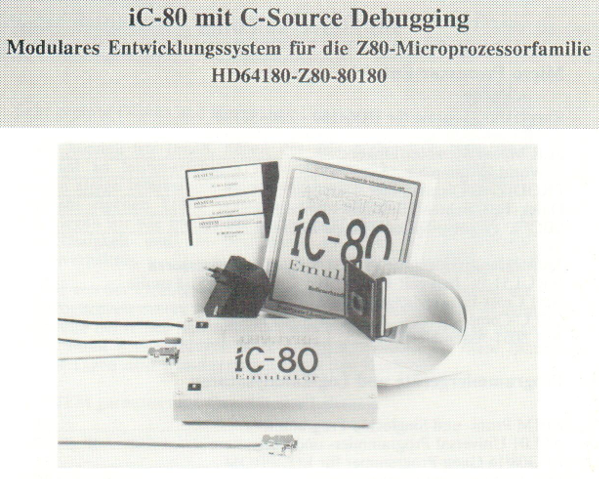
-
1986
Helmut Kindermann founds “iSYSTEM Gesellschaft für Informatiksysteme mbH” based in Dachau, Germany. Located just to the west of Munich, Bavaria, which had moved from an agrarian state to one of Germany’s leading industry centers during the 60’s and 70’s, there were plenty of business opportunities on the company’s doorstep. The company starts as a distributor of hardware and software for embedded software developers. Included in the company’s portfolio are cross-compilers for the 8051; EPROM programmers; PC/XT/AT emulators for the 8031/51; real-time co-processors based upon the Hitachi HD64180; and a Z80 simulator.

-
1985
Hitachi develops a Z80-based processor with an integrated memory management unit (MMU) named HD65180, later known as the “Super Z80” that was later licensed to Zilog. Motorola launches the 68HC11, an 8-bit microcontroller that finds a home in automotive applications, barcode readers and other embedded systems. Intel’s 80386, a 32-bit processor based on the x86 architecture, is launched. It can correctly execute most code intended for its 8086 and 80286 predecessors.
-
1982
Commodore Business Machines launch the Commodore 64, also known as the C64, the highest-selling single computer of all time.
With a 16-bit external data bus multiplexed with a 20-bit address bus, Intel launches the 80186. The 80188, with an 8-bit data bus was also released in the same year. The non-multiplexed 80286 was also launched as an upgrade to 8088-based PCs.
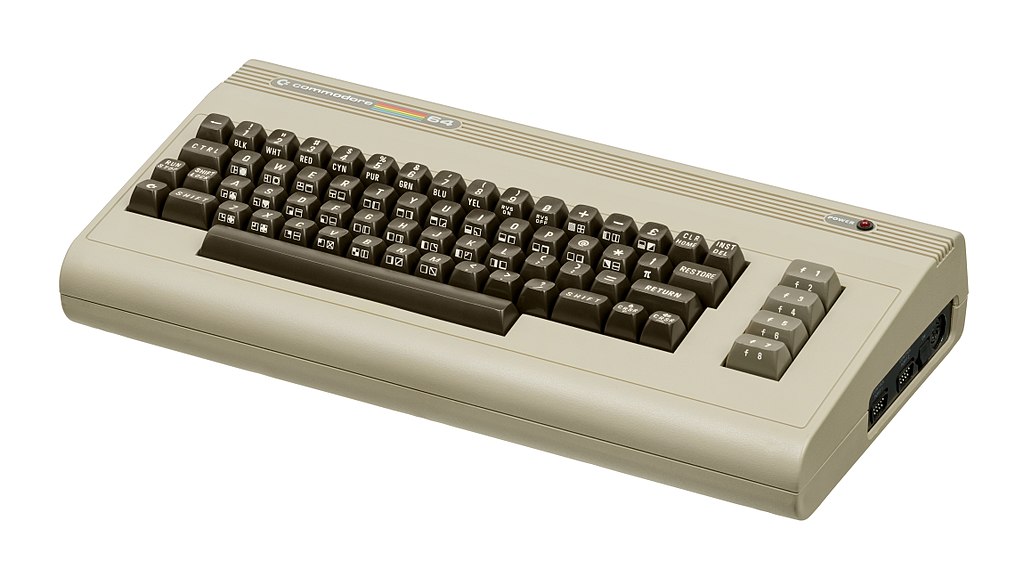
-
1980
Developed for embedded systems, Intel’s MCS-51, better known as the 8051, is launched in NMOS technology.
-
1979
Intel’s Haifa laboratory in Israel design the 8088, based upon the 8086 but with a shortened prefetch queue and an 8-bit, instead of 16-bit, data path.
-
1978
After almost two years of development, Intel launches the 8086, a 16-bit microprocessor that became the core of the IBM PC XT and launched the x86 family upon which today’s PC industry is built.
Terry Ritter and Joel Boney introduce the 6809 at Motorola, an 8-bit microprocessor with some 16-bit features. The device becomes the core for the Dragon and TRS-80 home computers.
Zilog launches the Z8 microcontroller featuring a 64KByte ROM or flash memory address space, 4,096 fast on-chip registers (for use as accumulators, pointer or ordinary RAM) and a host of typical MCU peripherals, such as A/D converters, serial interfaces and IrDA encoder/decoders.
-
1976
First working samples of Zilog’s Z80 microprocessor are delivered by Federico Faggin and his team.
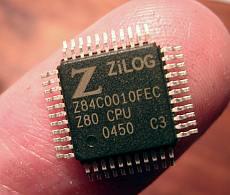
-
1975
Designed by Chuck Peddle’s team for MOS Technology, the 6502 processor was the least expensive, fully-featured microprocessor on the market at introduction.
-
1974
The MC6800 was introduced by Motorola and was the only family of integrated circuits (ICs) that could operate from a single 5V power supply, with alternative microprocessors requiring three voltages.
